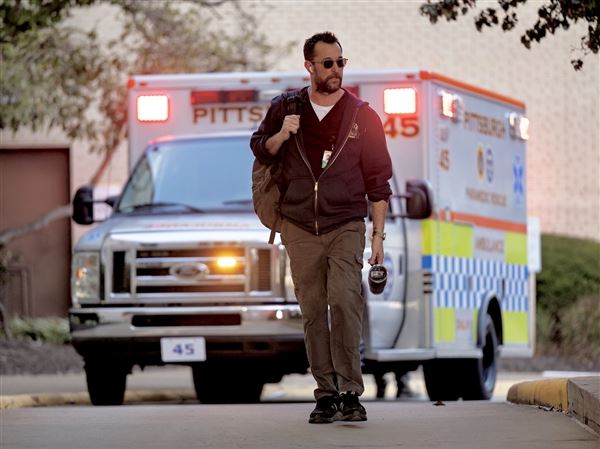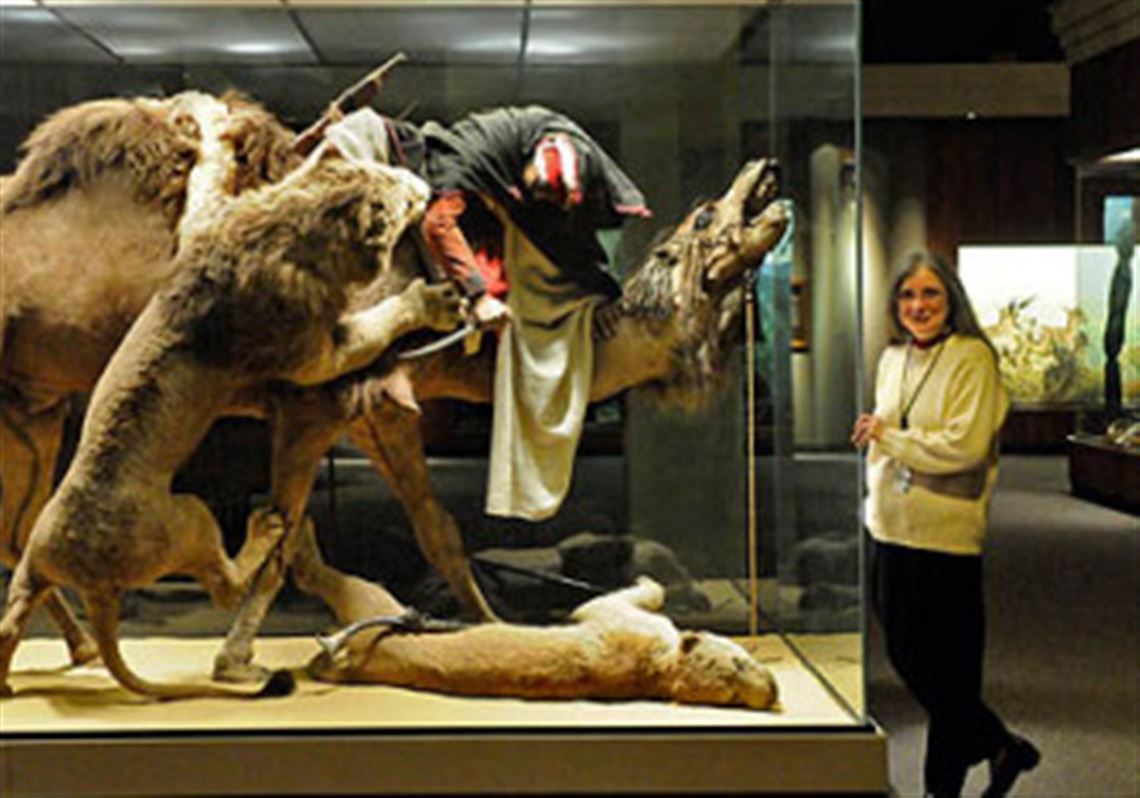By year’s end, the Arab Courier (Attacked by Lions) — arguably the most popular exhibit in the Carnegie Museum of Natural History — will be studied, restored then relocated with new signage to a more prominent museum location.
The 151-year-old diorama featuring a saber-bearing North African courier on camelback being attacked by Barbary lions — with claw marks included — currently is exhibited in the museum’s second-floor Wildlife Hall but will be relocated to the main hallway between the natural history museum gift shop and the Hall of Sculpture in the Museum of Art.
“Arab Courier, next to Dippy [the museum’s huge Diplodicus dinosaur], is our most famous object, and we want to place it where more people can experience it,” said Eric Dorfman, director of the Museum of Natural History. “We are putting it at the juncture of the natural history museum and the Museum of Art because you can argue it’s more of an art piece than it is natural history.”
Created in 1867 in Paris by the French company Maison Verreaux, the 3-D diorama depicts the courier in the context of Parisian interpretation of North African culture at the time, he said. More to the point, the exhibit with two now-extinct Barbary lions reflects a romantic “Orientalism” artistic style typical of the late 19th century. One dramatic detail is the fact the courier mannequin has actual human teeth.
That idea persuaded the museum, which will use a recent private donation to fund the project, to have a CT scan done on the courier’s head to assure that no other human parts, be it a skull or pieces of bone, were used.
“We don’t expect any other human parts,” Mr. Dorfman said. “This gives us a good opportunity to do as much research as possible, do a [CT scan] and see as much as we can within the bounds of good taste. We will be upfront about what’s there. If we find it, we won’t hide it.”
Finding nothing human beyond the teeth, he said, would put an end, at long last, to urban legends about the courier.
Even in 1867, it was rare for taxidermists to use human remains in dioramas, something that now is forbidden and considered an unethical practice. The two extinct lions also provide the museum staff “another avenue to explore, regarding ethics and wildlife conservation,” a museum release says.
New signage will detail how the diorama was made, along with its historical context and explanation of ethical standards museums now follow.
“The key message for me is that this will be celebrated as a work of art and made more easily accessible to people,” Mr. Dorfman said.
David Templeton: 412-263-1578 or dtempleton@post-gazette.com.
First Published: April 22, 2016, 12:19 a.m.
Updated: April 22, 2016, 4:12 a.m.


















